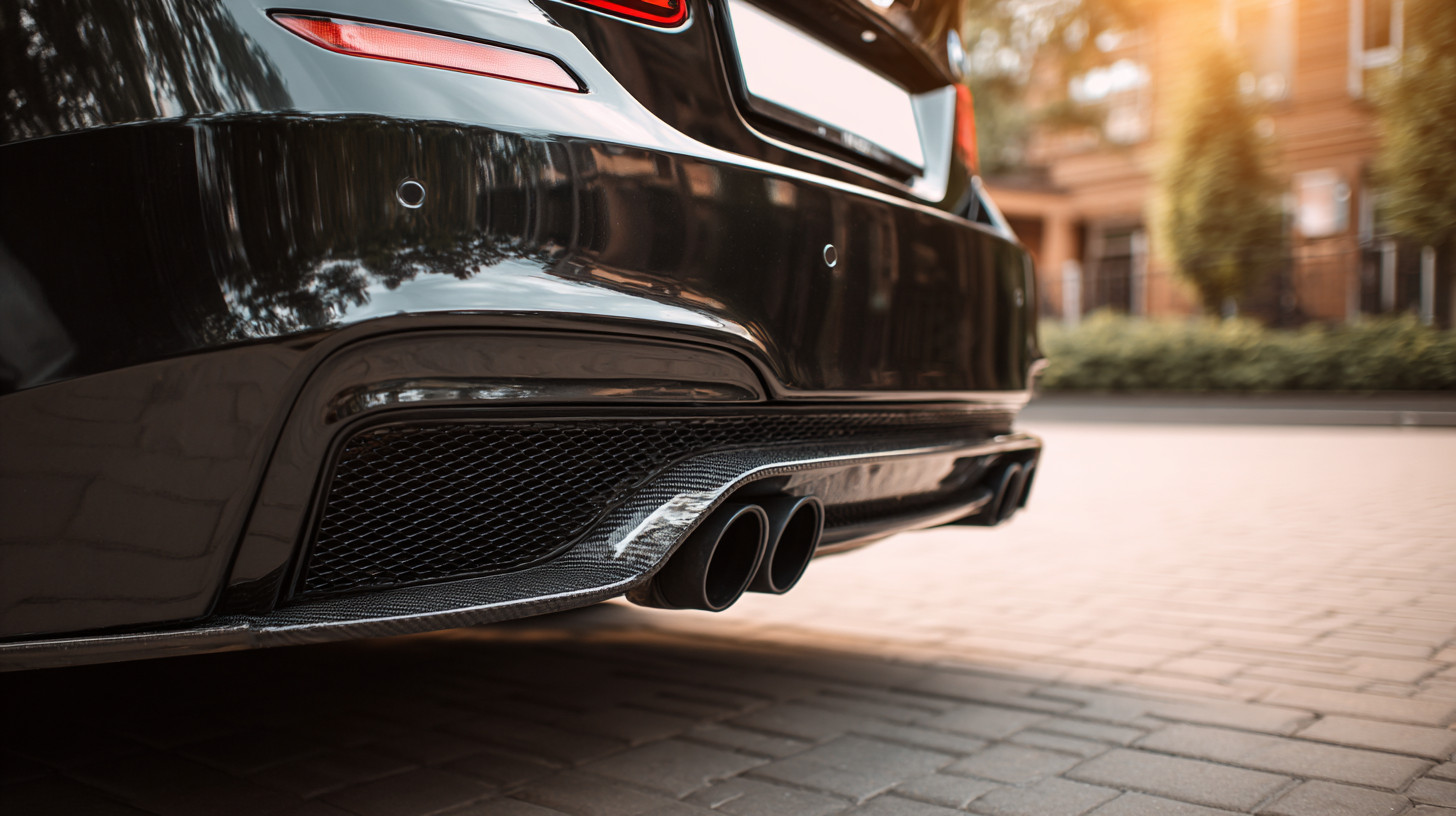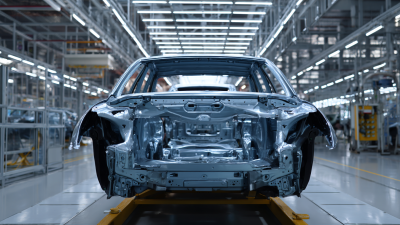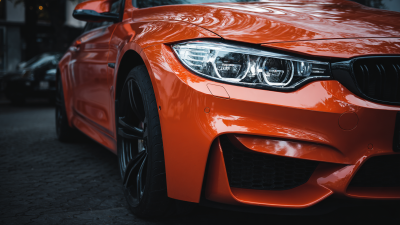
How to Choose the Right Car Bumper for Your Vehicle Needs
 Choosing the right car bumper for your vehicle is a crucial decision that can significantly impact both the
aesthetic and safety aspects of your automobile.
A car bumper not only serves as a protective barrier against minor collisions and impacts but also plays a key role in the overall design and functionality of your vehicle.
With countless options available on the market, ranging from OEM (Original Equipment Manufacturer) bumpers to aftermarket alternatives, it’s essential to
understand your specific needs and circumstances before making a selection.
Whether you're looking to enhance your car's visual appeal, improve its safety features, or adapt to particular driving conditions,
this guide will provide you with valuable insights into the various types of car bumpers, materials, and considerations to help you make an informed choice that best suits your vehicle needs.
Choosing the right car bumper for your vehicle is a crucial decision that can significantly impact both the
aesthetic and safety aspects of your automobile.
A car bumper not only serves as a protective barrier against minor collisions and impacts but also plays a key role in the overall design and functionality of your vehicle.
With countless options available on the market, ranging from OEM (Original Equipment Manufacturer) bumpers to aftermarket alternatives, it’s essential to
understand your specific needs and circumstances before making a selection.
Whether you're looking to enhance your car's visual appeal, improve its safety features, or adapt to particular driving conditions,
this guide will provide you with valuable insights into the various types of car bumpers, materials, and considerations to help you make an informed choice that best suits your vehicle needs.
Understanding the Different Types of Car Bumpers: A Comprehensive Guide
When selecting the right car bumper for your vehicle, it is essential to understand the various types available on the market. Primarily, bumpers can be categorized into two main types: standard and aftermarket.
Standard bumpers, often made from plastic or fiberglass, are designed to meet the manufacturer’s specifications. They offer adequate protection for typical driving scenarios and tend to be less expensive, making them a popular choice for everyday vehicles.
Conversely, aftermarket bumpers provide a variety of options that can enhance both aesthetics and functionality. These bumpers are often constructed from more robust materials like steel or aluminum, offering superior protection against collisions and off-road impacts. Additionally, aftermarket bumpers can come in various styles and finishes, allowing vehicle owners to customize the look and performance to suit their personal preferences. Understanding these differences will help you make an informed decision that aligns with your driving habits and vehicle usage.
Evaluating Material Options for Car Bumpers: Impact Resistance and Durability Statistics
 When choosing the right car bumper, evaluating the material options is crucial as it directly impacts both impact resistance and durability. Common materials for car bumpers include plastic, metal, and composite options. Each material has distinct characteristics influencing its performance in the event of a collision.
When choosing the right car bumper, evaluating the material options is crucial as it directly impacts both impact resistance and durability. Common materials for car bumpers include plastic, metal, and composite options. Each material has distinct characteristics influencing its performance in the event of a collision.
Plastic bumpers, often made from thermoplastics or polycarbonate, are lightweight and can absorb shocks effectively, making them a popular choice for many manufacturers. However, their resilience to extreme temperatures and UV exposure can diminish over time, affecting their overall lifespan.
Metal bumpers, such as those made from steel or aluminum, provide robust protection and higher durability levels. They are less prone to cracking but tend to be heavier, which may affect vehicle fuel efficiency. Additionally, advancements in composite materials combine the benefits of both plastic and metal, offering enhanced impact resistance while remaining lightweight.
When selecting a bumper, it is essential to consider not only the material's ability to withstand impacts but also its long-term durability statistics to ensure it meets your vehicle needs adequately.
Assessing Compatibility: How to Match Bumper Styles with Vehicle Models and Specs
When selecting the right car bumper for your vehicle, assessing compatibility with your vehicle's model and specifications is crucial. Different bumper styles can significantly affect not only the aesthetic appeal of your car but also its functionality and safety. For instance, a study illustrated that selecting bumpers that align with the original equipment manufacturer (OEM) specifications can enhance the impact resistance of the vehicle, helping to prevent further damage during collisions. Research highlights that OEM bumpers account for a 20-30% increase in durability compared to aftermarket alternatives, making compatibility a critical factor in your decision-making process.
Moreover, understanding the relationship between your car's model and bumper specifications can lead to better performance outcomes. Similar to compatibility assessments in other fields, such as the evaluation of protein structures in cryogenic electron microscopy, identifying the right bumper requires a systematic approach. The analysis should focus on the mounting points, weight, and material composition of the bumper to ensure it meets the safety standards for your vehicle. Reports indicate that improper bumper compatibility can escalate repair costs by an average of 15-25%, emphasizing the financial benefits of making informed choices.
Car Bumper Compatibility Analysis
Cost Analysis: Budgeting for Car Bumpers – Average Prices and Replacement Trends
When selecting a car bumper, it’s essential to consider the associated costs, as they can vary significantly based on material, vehicle type, and whether it’s an OEM (Original Equipment Manufacturer) or aftermarket product. According to a 2023 report by the Automotive Parts Association, the average price for a front bumper replacement ranges from $300 to $1,200, including parts and labor. The variation in pricing is often due to the differences in construction materials; for instance, plastic bumpers tend to be more affordable, while steel and aluminum options can drive costs upward.
Additionally, trends in bumper replacements have shown a significant shift towards eco-friendly materials, which may also influence budget considerations. A study by the Automotive Innovation Council indicated that 30% of consumers are now opting for bumpers made from recycled materials, often at a cost similar to traditional options. This trend not only reflects growing environmental concerns but may also help in potential long-term savings on repairs, as these materials often exhibit enhanced durability and resilience. Therefore, budgeting for a car bumper involves a balance between immediate costs and the longevity and performance of the chosen material.

Safety Standards and Regulations: Ensuring Your Bumper Meets Industry Requirements
When choosing the right car bumper, ensuring compliance with safety standards and regulations is paramount. Bumpers play a critical role in absorbing impact and protecting both the vehicle and its occupants. It’s essential to check if the bumper meets the Federal Motor Vehicle Safety Standards (FMVSS) applicable in your region. Always look for labels or certifications indicating that the bumper has undergone rigorous testing.
Tips: Always consult your vehicle's manual or manufacturer guidelines to know the specific safety requirements your bumper must meet. Additionally, consider bumpers that come equipped with crumple zones and reinforced materials, as these features provide extra protection in the event of a collision.
Another aspect to keep in mind is the compatibility of the bumper with your vehicle's makeup. Each vehicle model may have unique specifications, and an ill-fitted bumper could lead to inadequate protection and potential legal issues if it fails to comply with regulations.
Tips: Research aftermarket options that are certified for safety and performance. Compare different bumpers based on materials used, design, and customer reviews to ensure you're making an informed decision.
Related Posts
-

Unleashing the Power of Chinese Manufacturing: The Global Rise of the Best Car Bumper
-

Comprehensive Guide to Selecting the Perfect Car Front Bumper Based on Industry Trends and Data
-

Front Bumper Problems: Addressing Common Issues Faced by Global Buyers
-

Top Strategies for Sourcing Audi Bodykit for Global Buyers
-

What is a Car Front Bumper and Why is it Crucial for Vehicle Safety and Performance
-

Future Innovations in Car Front Bumper Technology for 2025



